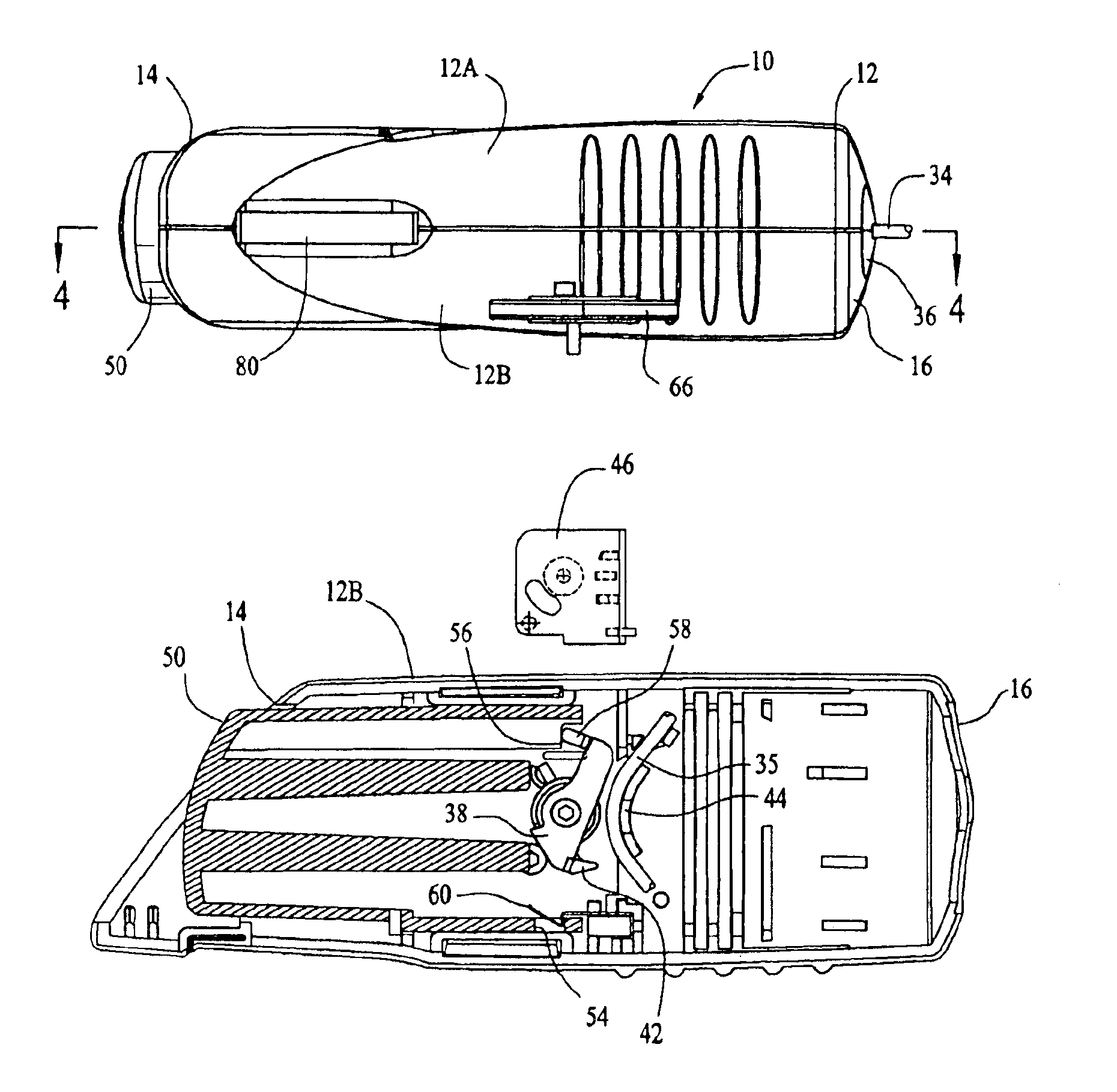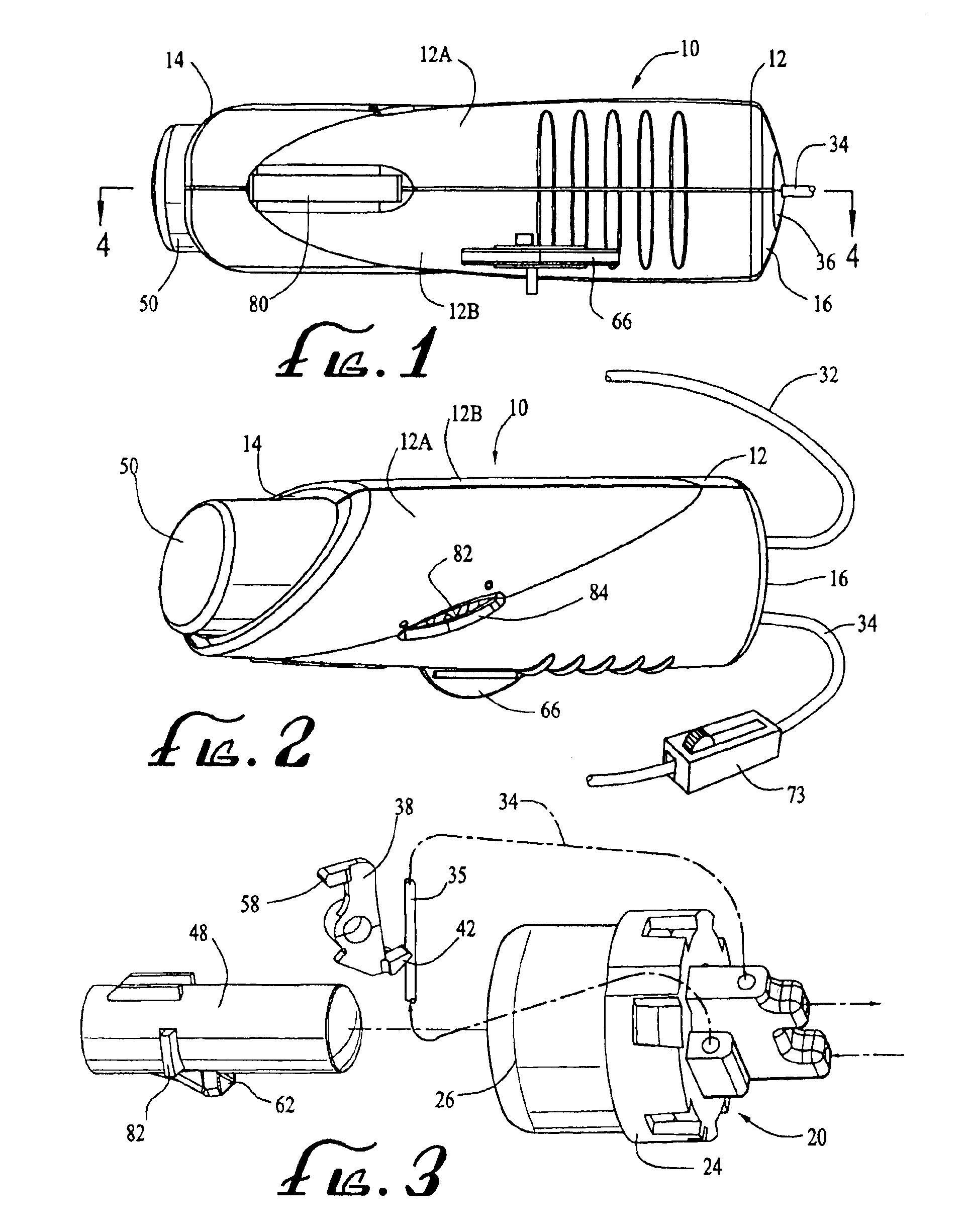Patient controlled drug administration device
a controlled drug and patient technology, applied in the field of medical devices, can solve the problems of training, skill and/or physical ability, several seconds or even minutes, and patients may not be physically capable of such a prolonged exertion, and achieve the effect of without skilled manipulation
- Summary
- Abstract
- Description
- Claims
- Application Information
AI Technical Summary
Benefits of technology
Problems solved by technology
Method used
Image
Examples
Embodiment Construction
[0037]An exemplary preferred embodiment of a patient controlled liquid drug administration (“PCA”) device 10 in accordance with the present invention is illustrated in the elevation view of FIG. 1. The device 10 comprises an elongated housing 12 having respective open top and bottom ends 14 and 16 and, as illustrated in, e.g., FIG. 7, an axial cavity 18 extending through it. In the particular exemplary embodiment illustrated in the figures, the housing is injection molded from a rugged plastic material, and includes two clam-shell side walls 12A and 12B that are coupled together, e.g., with an adhesive, along a medial plane extending through the device.
[0038]As shown in the cross-sectional views of FIGS. 4-6, a reciprocating pump 20 is mounted in the cavity 18 of the housing 12 at the bottom end 16 thereof. The pump defines a closed reservoir 22 for a liquid drug, and includes a first wall, or seat, 24 that is fixed in the cavity against movement, and a second, flexible wall 26 that...
PUM
 Login to View More
Login to View More Abstract
Description
Claims
Application Information
 Login to View More
Login to View More - R&D
- Intellectual Property
- Life Sciences
- Materials
- Tech Scout
- Unparalleled Data Quality
- Higher Quality Content
- 60% Fewer Hallucinations
Browse by: Latest US Patents, China's latest patents, Technical Efficacy Thesaurus, Application Domain, Technology Topic, Popular Technical Reports.
© 2025 PatSnap. All rights reserved.Legal|Privacy policy|Modern Slavery Act Transparency Statement|Sitemap|About US| Contact US: help@patsnap.com



